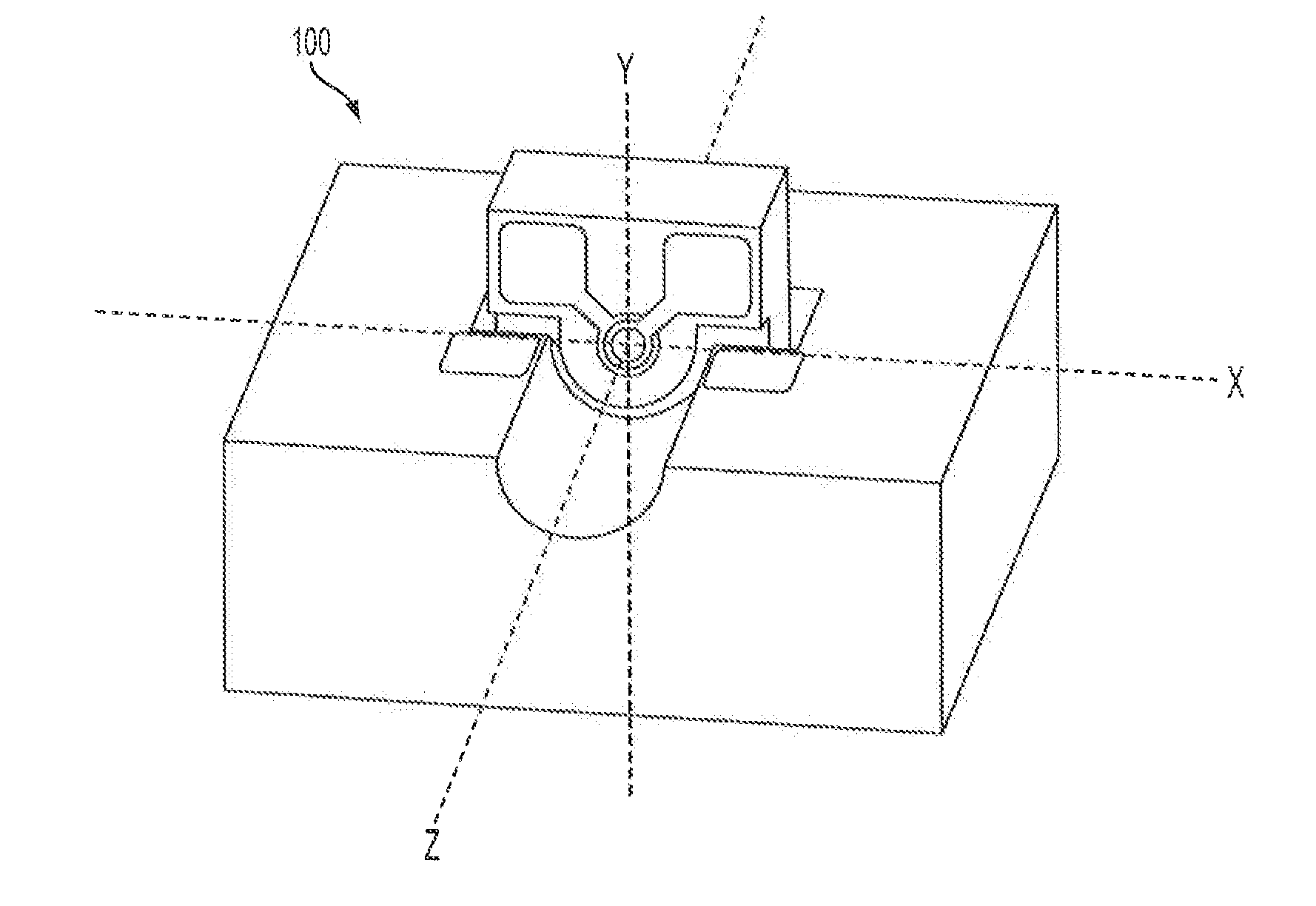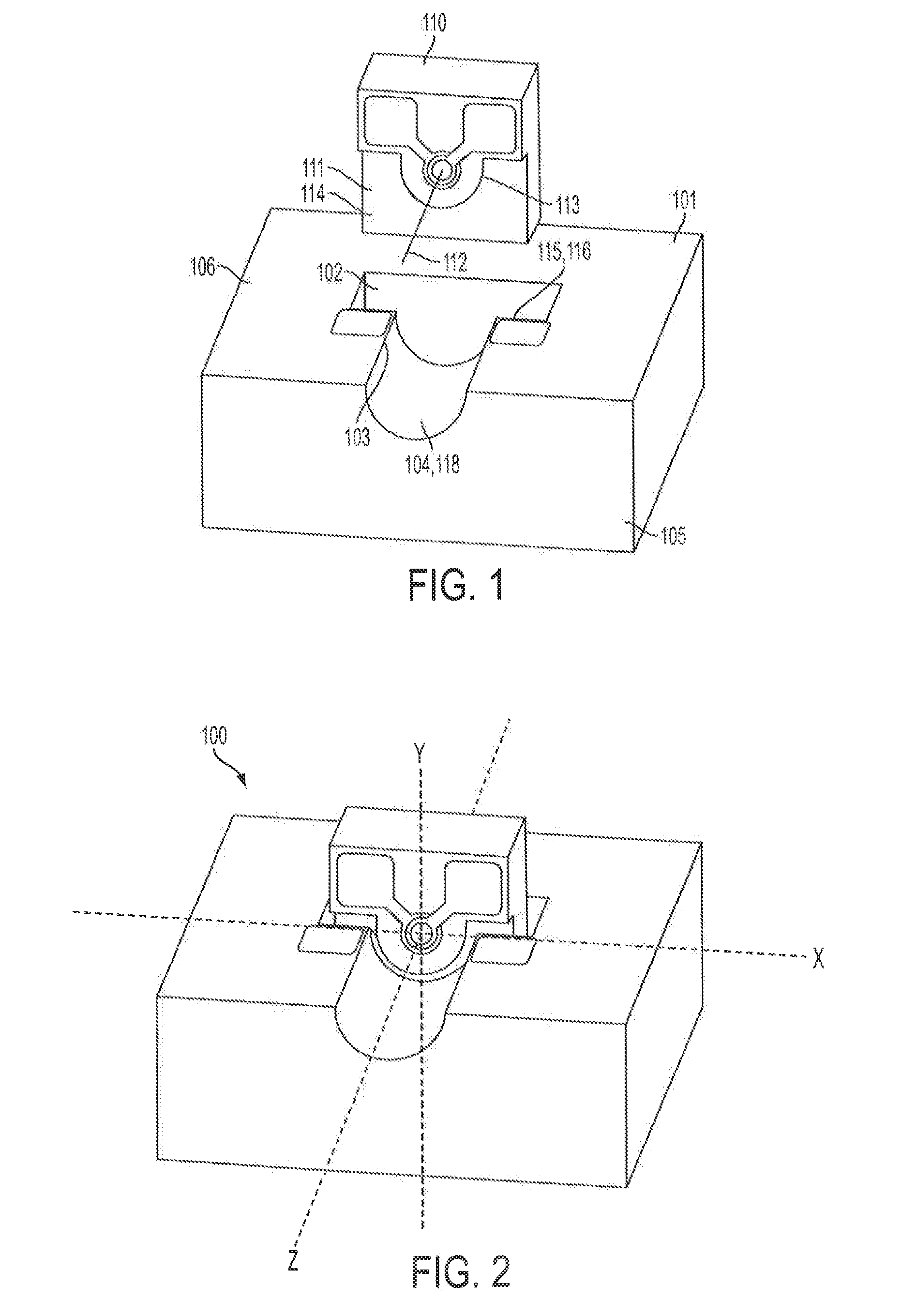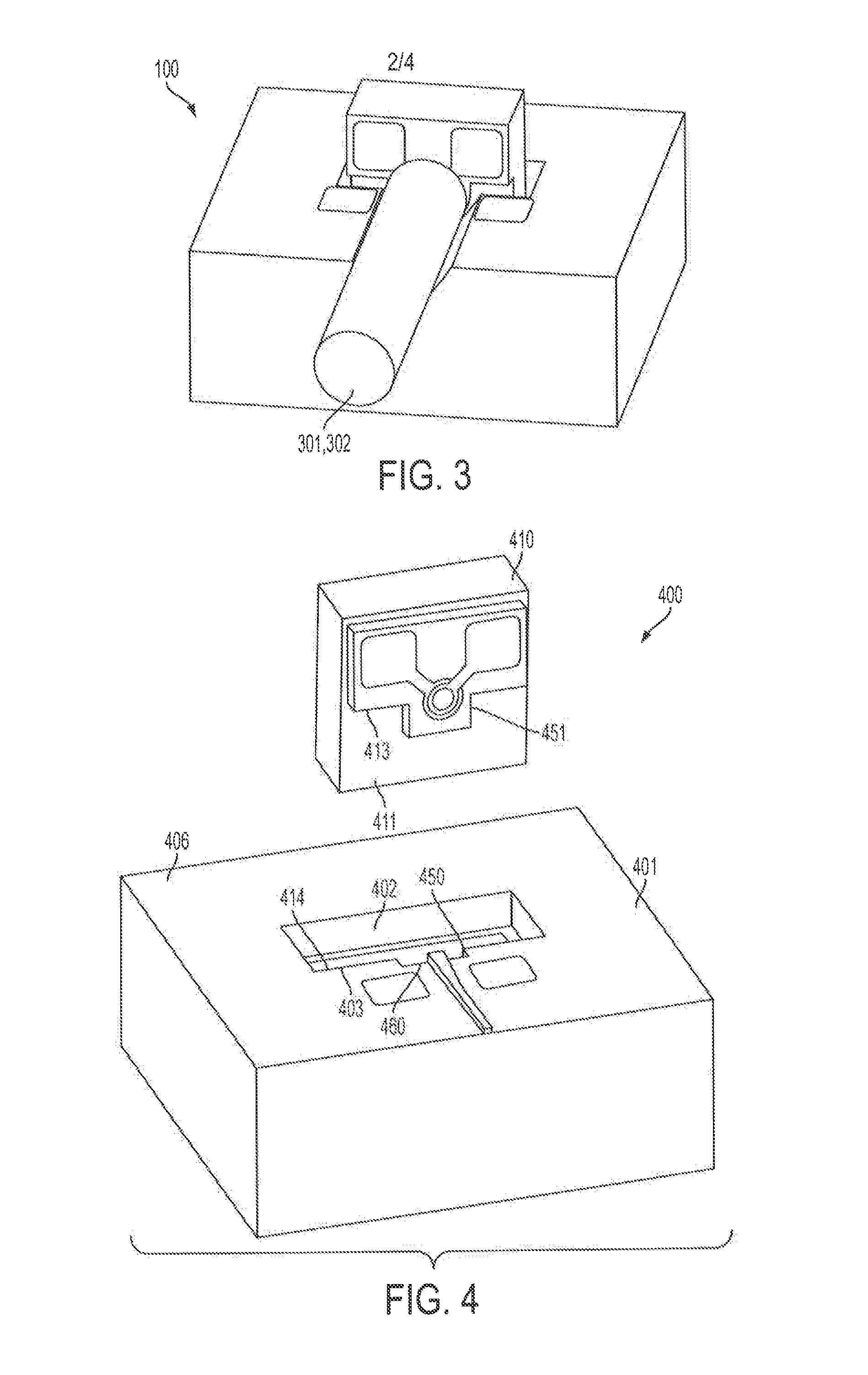Optical assembly with passive alignment
- Summary
- Abstract
- Description
- Claims
- Application Information
AI Technical Summary
Benefits of technology
Problems solved by technology
Method used
Image
Examples
Embodiment Construction
[0017]Referring to FIGS. 1-3, one embodiment of the optical assembly (OA) 100 of the present invention is shown. The OA is described herein in relation to x, y and z axes, although it should be understood that such an orientation is for illustration purposes only and should not be interpreted as limiting the claimed invention. The OA 100 comprises a first substrate 101 having a planar surface 106. The first substrate also comprises a first wall 116, which is perpendicular to the planar surface, and which, in this embodiment, defines a portion of cavity 102 in the planar surface. The first substrate 101 also comprises a first register surface 103 adjacent the first wall, and a foundation 104 for receiving an optical element 301, such as an optical conduit 302 (see FIG. 3), which extends at least partially along the z axis from the first wall 116 to an edge 105 of the substrate. The OA 100 also comprises an opto-electrical device (OED) 110 having a top surface 111 and an optical axis ...
PUM
 Login to View More
Login to View More Abstract
Description
Claims
Application Information
 Login to View More
Login to View More - R&D
- Intellectual Property
- Life Sciences
- Materials
- Tech Scout
- Unparalleled Data Quality
- Higher Quality Content
- 60% Fewer Hallucinations
Browse by: Latest US Patents, China's latest patents, Technical Efficacy Thesaurus, Application Domain, Technology Topic, Popular Technical Reports.
© 2025 PatSnap. All rights reserved.Legal|Privacy policy|Modern Slavery Act Transparency Statement|Sitemap|About US| Contact US: help@patsnap.com



